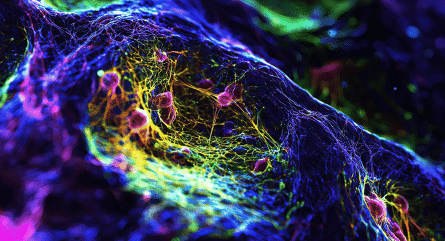You might know the polar bear from National Geographic documentaries or a trip to the zoo, and every summer a lucky few get to see brown bears from afar. They are both big, occasionally ill-tempered, and known to live in some of the most remote places in the world. But what has not been well-known until recently is how the two are genetically related.
Polar Bear vs. Grizzly Bear (North American Brown Bears)
North American brown bears, also known as the grizzly, once roamed across much of western North America and the Great Plains but today are sequestered into large wilderness areas in places like Montana, Idaho, Wyoming, Alberta, British Columbia, and Alaska. Ursus arctos horribilis typically lives 25 years, weighs 800 pounds, measures 8 feet tall when standing, and can roam across 600 square miles. Fun fact? One radio-collared bear in Montana was recorded swimming up to 7 miles at a stretch across Flathead Lake. (Well, maybe that’s not such a fun fact if you are swimming in Flathead Lake.)
The polar bear, meanwhile, lives largely within the Arctic Circle and around the borders of the Arctic Ocean. Ursus maritimus have large furry feat and can both run on land and swim in water. They tend to frequent the edges of sea ice, where they hunt seals, can stand nearly 10 feet tall, and weigh between 600 pounds (females) and 1,000 pounds (males). Their characteristic white hair tends to yellow with age.
So how did the Earth wind up with these two powerful, fearsome carnivoran mammals of the Ursidae family?
According to some research, the bear family developed around 38 million years ago and was further refined about 4.2 million years ago. Polar bear fossils from around 20,000 years ago show their molars to have changed significantly from their more southerly cousins. Ursus maritimus likely developed when a population of brown bears became isolated during a period of glaciation in eastern Siberia.
DNA analysis suggests the polar bear split from the brown bear around 150,000 years ago and developed evolutionary advantages such as thick coats and white coloring. Teeth adapted to tear apart seals and the bears learned to hunt at the ice's edge.
Though distinct, the two animals retain close ties. Very close.
“Proving their genetic compatibility, brown bears and polar bears can mate and produce viable, or fertile, offspring,” notes PBS. “It is this reproductive viability that establishes that an animal belongs within a given species.”
Other studies create a different picture of how polar and brown bears are related. A 2015 report published in Molecular Ecology, for example, found “clear evidence that gene flow between the two species had a geographically wide impact, with polar bear DNA found within the genomes of brown bears living both on the Admiralty, Baranof, and Chichagof islands and in the Alaskan mainland. Intriguingly, while brown bear genomes contain up to 8.8% polar bear ancestry, polar bear genomes appear to be devoid of brown bear ancestry, suggesting the presence of a barrier to gene flow in that direction.”
The study concludes: “Interestingly, while brown bears possess polar bear ancestry across significant portions of their genomes, brown bear ancestry appears absent from polar bears. This suggests that an as yet unidentified barrier to gene flow exists that prevents hybrid individuals from successfully backcrossing with the polar bear population.”
While brown bear and polar bear show similarities base on their DNA, brown bear share DNA with bears which have not roamed the Earth for millennia. A 2018 study in Nature Ecology & Evolution found that, in much the same way that today’s humans harbor Neanderthal DNA, modern brown bears contain genetic traces of extinct cave bears.
“The finding challenges our view of extinction,” noted The New York Times.
That analysis also shows that, as with polar and brown bears, genes flowed each way between brown and cave bears, with the most recent being from cave to brown.
Are Irish Brown Bears and Yetis Related to Grizzly Bears?
DNA analysis also shows polar bears have two other surprising relatives.
In 2013, a British scientist from Oxford tested remnants of purported yetis—one, a supposed yeti mummy found in northern India, the other a single hair found in Bhutan—and compared their DNA samples to a database of animal genomes and found that they were genetically similar to a polar bear jawbone found in Norway that is at least 40,000 years old, suggesting that the “Asian yetis” were not related to modern Asian bears but were instead polar bear descendants which could be either a new species or a hybrid.
The other relative? Irish brown bears. DNA analysis of brown bear teeth found in caves in Ireland reveal a close link between them and polar bears.
“This means,” explains Irish Central, “before or during the last Ice Age the two species came together and polar bears mated with the Irish brown bear.”


























